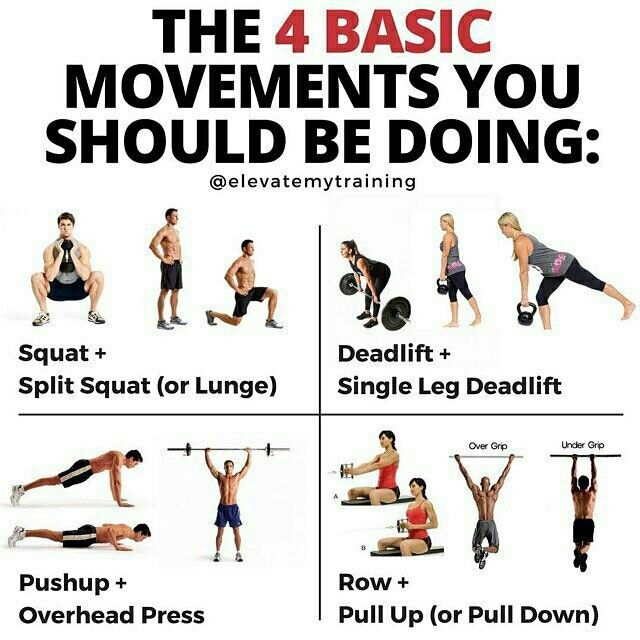
Resuming your exercise routine can be difficult if you've been absent. If you've been unable to exercise, you may not be sure where to begin. You might have been too busy with other responsibilities or simply not had the time to exercise. This means you'll need to start slow and build up slowly. You should be able to re-build the basics and work on mobility. Your workout intensity and volume should be increased eventually. By following these tips, you'll be able to structure your training schedule and return to a fit and healthy lifestyle.
The most common mistake people make when starting a new exercise program is jumping into high-intensity interval training (HIIT). This type of exercise can be extremely demanding so make sure that you are in great shape. While you may be eager to try HIIT, it's important to start slow and gradually. Start with moderate activity to determine your ability to handle the activity.

It is essential to find a gym buddy. You will be more consistent and motivated if you have a virtual friend to workout with. Another option is to find a friend interested in returning to working out. This will make it easier to keep track of each other and help you be more consistent. It will be easier to stay motivated if you have someone to workout with. It is important to find someone who is available to help you get into your fitness routine.
Before you start your first workout, you should consult your doctor. Your doctor's guidance will help you feel more confident in your abilities and ease your mind. Reduce the intensity of your exercise and the amount of time you spend doing it. You will soon get used to it. Start small and work your way up. So you can keep active and increase your strength and endurance.
Once you are back in a routine, you need to ensure your diet is as healthy and balanced as possible. Make sure to eat whole-foods, and that you get adequate protein. If you take a break from meal preparation, you will need to restart it. It doesn't matter if you like baking or cooking, it is important to keep your body happy. It's vital to get back into the swing of things if you've been absent for a while.

Two weeks of rest is recommended before you begin your workout. Before you start your workout, you need to create a plan. You should work out as long as you can. During this time, it is important to reduce your intensity by working out in the gym. It is possible to only do a handful of 30-minute sessions per week. To keep your routine interesting, you can add one day to the schedule each week.
FAQ
Exercise: Good or bad for immunity?
Exercise is good for your immune system. When you exercise, your body produces white blood cells which fight off infections. Your body also removes toxins. Exercise helps to prevent heart disease and cancer. It also reduces stress levels.
Exercising too frequently can make your immune system weaker. If you work out too hard, your muscles become sore. This causes inflammation and swelling. The body then needs to make more antibodies to fight infection. However, these antibodies can also cause allergic reactions and autoimmune diseases.
So, don't overdo it!
How can I tell what is good for me?
You must listen to your body. Your body knows what you need when it comes time to eat, exercise, and get enough rest. Your body will tell you what to do so that you don't go overboard. Pay attention to your body, and ensure that you are doing all you can to keep yourself healthy.
What is the healthiest lifestyle to life?
Living a healthy lifestyle is one that encourages you to eat well, exercise regularly, get enough sleep, and avoids stress. These guidelines will help you live a long, healthy life.
Starting small can make a big difference in your diet, and even your exercise routine. To lose weight, you can start walking for 30 mins each day. Or, if you want to get more active, take up swimming or dancing. You could also sign up to an online fitness platform like Strava, which tracks your activity.
What should my diet consist of?
You should eat lots of vegetables and fruits. They contain vitamins and minerals which help keep your immune system strong. They are also rich in fiber, which is good for digestion and makes fruits and vegetables filling. Include at least five portions of fruit and vegetables per day.
Drink plenty of water. Water helps flush toxins out of your body and makes you feel fuller between meals. Drink about eight glasses each day.
Whole grains are better than refined ones. Whole grains are rich in nutrients such as iron, zinc and magnesium. Refined grains are stripped of some of their nutritional value.
Sugary drinks are best avoided. Sugary drinks are high in empty calories and can lead to obesity. Choose water, milk or unsweetened tea instead.
Avoid fast food. Fast food has little nutritional value. Although it may taste delicious, fast food won't provide you with the energy you need for your daily activities. Avoid soups, sandwiches and other unhealthy options.
Limit alcohol intake. You can reduce your intake of alcohol by limiting the amount of empty calories. Limit the number of alcoholic beverages you consume per week to no more that two.
Red meat consumption should be reduced. Red meats contain high amounts of saturated fats and cholesterol. Choose lean cuts such as beef, pork and lamb, chicken, fish, or turkey.
Statistics
- WHO recommends consuming less than 5% of total energy intake for additional health benefits. (who.int)
- According to the Physical Activity Guidelines for Americans, we should strive for at least 150 minutes of moderate intensity activity each week (54Trusted Source Smoking, harmful use of drugs, and alcohol abuse can all seriously negatively affect your health. (healthline.com)
- In both adults and children, the intake of free sugars should be reduced to less than 10% of total energy intake. (who.int)
- According to the 2020 Dietary Guidelines for Americans, a balanced diet high in fruits and vegetables, lean protein, low-fat dairy and whole grains is needed for optimal energy. (mayoclinichealthsystem.org)
External Links
How To
What does "vitamin" actually mean?
Vitamins are organic substances found naturally in food. Vitamins are necessary for us to absorb nutrients in the foods we consume. Vitamins cannot come from the body so food must provide them.
There are two types of vitamins: water soluble and fat soluble. Water-soluble vitamins dissolve in water easily. You can find vitamin C,B1 or thiamine, B2 or riboflavin and B3 or niacin, B3/niacin, B6/pyridoxine, folic Acid, biotin and pantothenic Acid as examples. The liver and fat soluble vitamins are stored within the liver and in fatty tissue. Vitamin D, E, K and A are some examples.
Vitamins can be classified according to biological activity. There are eight major types of vitamins:
-
A - Vital for normal growth and maintaining good health.
-
C is important for nerve function and energy production.
-
D - necessary for healthy bones and teeth.
-
E - Required for good vision & reproduction
-
K - essential for healthy muscles, nerves, and bones.
-
P – vital for building strong bones.
-
Q - Aids in digestion and absorption.
-
R - necessary for making red blood cells.
The recommended daily allowance (RDA), for vitamins, varies depending upon age, gender, or physical condition. RDA values are set by the U.S. Food and Drug Administration (FDA).
For adults 19 years and over, the RDA of vitamin A is 400mg per day. Pregnant women require 600 micrograms daily to support fetal development. Children ages 1-8 require 900 micrograms per day. For infants younger than one year, 700 micrograms are required daily. However, this number drops to 500 micrograms each day for children aged 9-12 months.
Children between the ages of 1-18 need 800 micrograms per daily for obesity, while children overweight require 1000 micrograms. Children underweight or obese will need 1200 mg per day.
Children aged 4-8 years old who have been diagnosed as having anemia require 2200 micrograms of vitamin C per day.
Adults over 50 years of age need 2000 micrograms per day for general health. Due to their increased nutrient needs, pregnant and breastfeeding women need 3000 micrograms daily.
Adults over 70 years of age need 1500 micrograms per day since they lose about 10% of their muscle mass each decade.
Women who are pregnant, nursing or breastfeeding need more than the RDA. Pregnant mothers need 4000 micrograms per daily during pregnancy and 2500 after giving birth. Breastfeeding moms need 5000 micrograms each day when breastmilk production occurs.